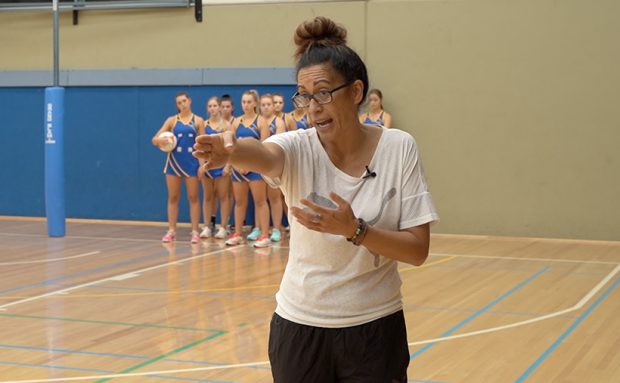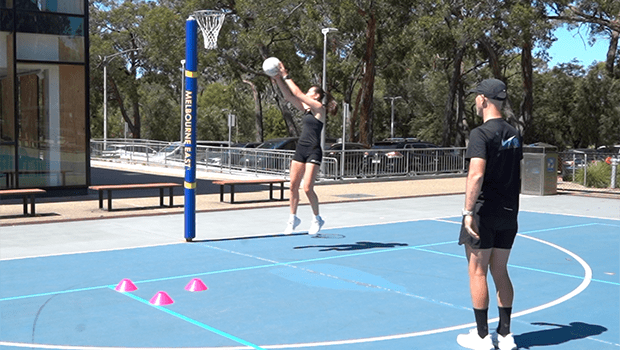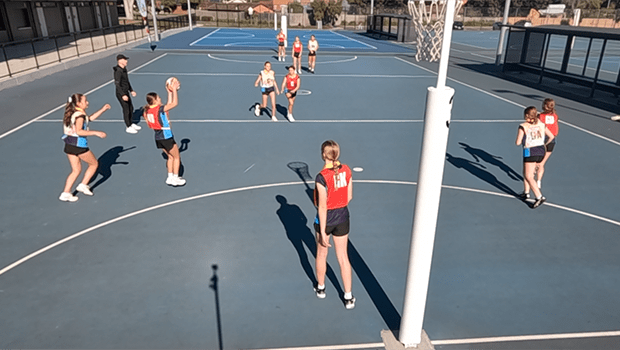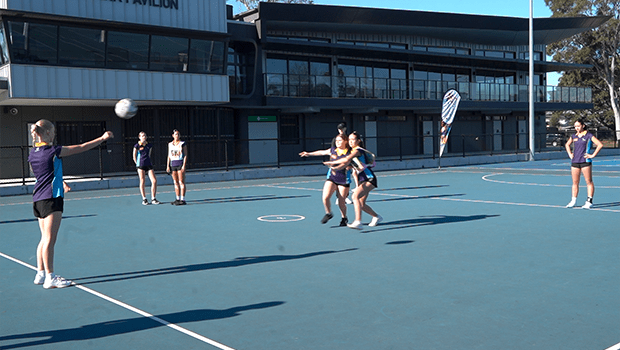Hands up if you’ve had this conversation at netball trials or selections before.
“Oh, look at her, she’s tall.”
“Good, I need a goal shooter.”
One of the interesting discussion points at a recent coaching course centred on strategies for developing and managing taller athletes. Just like in any sport, whether it’s Aussie Rules, basketball, tennis or rugby, tall kids develop differently to other athletes, particularly if they’re significantly taller from a young age.
At one point or another, we’ve all had our eyes light up when a 6-foot 13-year-old walks in at trials. Imagine all the goals we’ll score with her under the post!
SIGN UP HERE FOR 400+ NETBALL DRILLS VIDEOS WITH LIVE INSTRUCTION
And inevitably those players dominate through their junior years, purely because they’re many inches taller than the opponents they face each week.
But what happens when the defenders eventually grow, and bridge that gap in height? All of a sudden that tall kid is facing athletes their own size – or close to it – who have better agility and skills because more time was spent developing them before you knew they were going to be tall.
The issue here is twofold: so many taller players struggle to take that next step because they’ve been plonked in the goal circle for the last three to five years; and those that do have the potential to progress further all of a sudden find themselves competing for selection against a large number of taller players who’ve also been steered towards goaling.
STUCK ON IDEAS FOR DEFENSIVE DRILLS? CHECK OUT OUR DEFENCE VIDEOS HERE
Back to that coaching course discussion…
The lack of depth in tall defensive talent at all levels is something to seriously consider when taking on taller players.
If every team has a taller shooter, there’s a good chance the winning team will be the one who has a similarly tall player to play on them.
So if you’ve got a taller player at selections or in your team and they don’t have a great or accurate shot – or even if they do – consider whether they might have the ability to develop at the other end of the court.
No, it won’t always be easy. Teaching a taller player how to move their feet quickly around an opponent. control their long limbs and be agile enough to have an impact is going to take a lot of patience and effort.
You might need to spend five times as long developing that tall player’s defensive skills than you’d need to spend developing them to the same level as a goaler. But will you, your club and the player be richly rewarded if you can get them there? Absolutely.
TIPS FOR DEVELOPING TALLER PLAYERS
- You may need to modify some drills slightly for them, to allow them to complete those drills with some success. A highly dynamic footwork movement targeted at midcourters may be very difficult for a taller player.
- Footwork, footwork, footwork. The more practice a taller player gets at making short, sharp footwork movements, the better they’ll be placed long-term. This is even more true for defenders, who need to be able to move around the body of a goaler who may remain relatively stationary.
- Work on their core strength. Defenders will need to be able to hold their own and hold their ground against big players, and core body strength will contribute markedly to how well they’re able to maintain their position.
- Be patient. Taller players are most likely not going to develop at the same rate as their smaller, more agile teammates, so give them the time they need to improve, and acknowledge those improvements.
- Take a long-term view. If you’re transitioning a player from goals to defence, have a discussion with them and their parents about the move being a long-term proposition. There’s no point in asking a young player to make the switch if they’re going to be dropped or not selected the following year because they weren’t immediately successful in the first season. Give them confidence by reassuring them that you’re looking at them for two or three years down the track, rather than expecting instant results.





